Akkaravadisal | sweet Milk pongal | Akkara adisil | Akkara adisal | srirangam Akkaravadisal | perumal kovil akkaravadisal | Iyengar recipe | Tamilnadu style Pongal | Indian sweet pudding | paal Pongal | Ayyengar Akkaravadisal | Pongal recipes | traditional south Indian Pongal variety with step by step pictures and video recipe. Check out the Akkaravadisal recipe. If you like the video pls SUBSCRIBE to my channel.
Akkaravadisal | sweet Milk pongal | Akkara adisil | Akkara adisal | srirangam Akkaravadisal | perumal kovil akkaravadisal | Iyengar recipe | Tamilnadu style Pongal | Indian sweet pudding | paal Pongal | Ayyengar Akkaravadisal | Pongal recipes | traditional south Indian Pongal variety | akkaravadisal koodaravalli | akkaravadisal koodaaravalli is a tasty South Indian sweet recipe. We use rice, dal, and jaggery combo like Sakkarai Pongal, but Akkaravadisal is cooked in milk and loaded with ghee. A pinch of edible camphor makes it rich, and tastes divine.
Temple prasadam Akkaravadaisal
Tamil Iyengar style Akkaravadisal is prepared during festivals like Pongal, gokulashtami, and koodaravalli day in the Tamil month of Margazhi (Marghazhi) and offered to Lord Vishnu. Akkara adisil is a special prasadam/neiveidyam in Srirangam Temple, during the Panguni Uthiram festival – divine couple, the Lord Ranganathar and Goddess Ranganayaki are seen together. Special darisanam on this day is widely called “Serthi sevai.” In Tamil, ‘Serthi’ means alongside and ‘Sevai’ is darshan. Akkaravadisal | Akkara adisal is served as prasadam / neiveidyam on panguni uthiram day.
authentic Iyengar style Akkaravadisal - divine prasadam
Akkaravadisal is a very traditional kovil prasadam prepared for Lord Ranganatha. Akkaravadisal has been mentioned in Naalayira Divya Prabandham in a couple of instances. The term Akkaram is a literary word for Sugar or jaggery and the word Vadisal is a descriptive term for cooking by steaming or boiling. Temple prasadam is loaded with ghee and milk, tastes divine, and is delicious.
Do I need this much milk for Akkara adisil?
Akkaravadisal is traditionally cooked with plenty of milk in vengala paanai. For faster cooking, I pressure cooked dal and rice with milk in the pressure cooker. If you cut down the milk, the dish will taste more like chakkarai Pongal. The unique taste of Ayyengar Akkaravadisal is from plenty of milk and ghee.
Can I use sugar or sugar candy for Akkaravadisal?
Traditional Perumal kovil prasadam Akkaravadisal is prepared with jaggery. According to taste preference, you can add Kalkandu or sugar. I have posted a milk-based kalkandu Pongal recipe. Checkout other Pongal varieties in TMF.
Do we need this much ghee for Akkaravadisal?
Ghee gives an aromatic divine taste to the Akkara adisil. Traditionally, equal or more quantity of ghee compared to rice is recommended. Altering ghee quantity will give good Pongal but for best taste akkaravadisal requires this amount of ghee.
Will the rice + dal cook well in milk?
I generally soak rice + dal for one hour in hot water, and that helps for easy cooking. Pressure cooking the rice + dal for 7-8 whistles ensures a mushy Pongal. For Iyengar style Akkaravadisal we need creamy rice + dal mixture. Though we pressure cook the dal + rice, cooking them again in extra milk gives a nice flavor and taste to the dish.
Do we need this much jaggery for Srirangam Perumal prasadam Akkaravadisil?
I usually add twice the amount of jaggery for most sweet recipes. For Akkara adisal we cook the rice + dal mixture with 4 cups of milk so I recommend using thrice the sugar to compliment the flavors.
Pongal recipes | bhogi recipes | kannum Pongal recipes
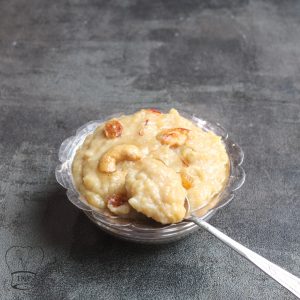
Ingredients
- Sona masoori rice | raw rice - 1/2 cup
- Moong dal - 2 tbsp
- Milk - 4 cups
- Ghee - 1/2 cup
- Water - 3/4 cup
- Jaggery - 1 + 1/2 cup tightly pressed
- Saffron - generous pinch
- Edible camphor | Pacha karpuram - a very little pinch
Instructions
- Wash rice and moong dal well
- Soak rice and dal in hot water for 1 hour, change water in between
- After 1 hour discard the water and add 2 cups of hot milk, 1/4 cup of hot water, and close the separator with a lid
- Pressure cook for 7-8 whistles and keep the cooker in low flame for 15 seconds and turn off the stove, let the pressure release naturally
- In a microwave-safe bowl add 1 + 1/2 cup of jaggery and 1/2 cup of hot water and microwave for 2-3 minutes until the jaggery melts down and mixture turns frothy boil
- In a wide pan add 2 tablespoon of ghee and turn on the stove to medium flame and let the ghee turns hot
- Add cashew and saute till the cashew starts changing color. Add raisins, roast well, and turn off the stove
- Transfer the roasted nuts into a small bowl
- Mash the cooked rice and dal well with a ladle and transfer into the pan
- Add 2 cups of hot milk and mix well to make a lump free smooth mixture
- Turn on the stove in low - medium flame and cook the mixture
- Cover with a lid and mix once in a while to avoid the mixture from sticking to the pan
- Add ghee little by little now and then cook for 10 minutes
- After the akkaravadisal comes together strain and add jaggery water and mix well
- Add ghee and saffron, cook for 3 minutes; mix well and cook for even cooking and to avoid akkaravadisal from sticking to the pan
- After 3 minutes, add cardamom powder and reminding ghee; mix well and cook
- Finally, add the roasted cashews and raisins, mix well and turn off the stove
- Add a very little pinch of edible camphor and mix well
Video
Notes
- Always add edible camphor after turning off the stove
- Cook Akkaravadisal in milk for the best taste
- You can use millet, quinoa, or any other grain of your choice
- Cook rice + dal mushy then make akkaravadisal
- Adjust jaggery according to your taste
Ingredients
Sona masoori rice | raw rice - 1/2 cup
Moong dal - 2 tbsp
Milk - 4 cups
Ghee - 1/2 cup
Water - 3/4 cup
Jaggery - 1 + 1/2 cup, tightly pressed
Saffron - generous pinch
Edible camphor | Pacha karpuram - a very little pinch
How to make Akkaravadisal with step by step pictures
- Wash rice and moong dal well
- Soak rice and dal in hot water for at least 1 hour
- After 1 hour discard the water and add 2 cups of hot milk, 1/4 cup of hot water, and close the separator with a lid
- Pressure cook for 7-8 whistles and keep the cooker in low flame for 15 seconds and turn off the stove, and let the pressure release naturally
- In a microwave-safe bowl add 1 + 1/2 cup of jaggery and 1/2 cup of hot water and microwave for 2-3 minutes until the jaggery melts down and mixture turns frothy boil
- In a wide pan add 2 tablespoon of ghee and turn on the stove to medium flame and let the ghee turns hot
- Add cashew and saute till the cashew starts changing color. Add raisins, roast well, and turn off the stove
- Transfer the roasted nuts into a small bowl
- Mash the cooked rice and dal well with a ladle and transfer into the pan
- Add 2 cups of hot milk and mix well to make a lump free smooth mixture
- Turn on the stove in low - medium flame and cook the mixture
- Cover with a lid and mix once in a while to avoid the mixture from sticking to the pan
- Add ghee little by little now and then; cook for 10 minutes
- After the akkaravadisal comes together strain and add jaggery water and mix well
- Add ghee and saffron, cook for 3 minutes; mix well and cook for even cooking and to avoid akkaravadisal from sticking to the pan
- After 3 minutes, add cardamom powder and reminding ghee; mix well and cook
- Finally, add the roasted cashews and raisins, mix well and turn off the stove
- Add a very little pinch of edible camphor and mix well


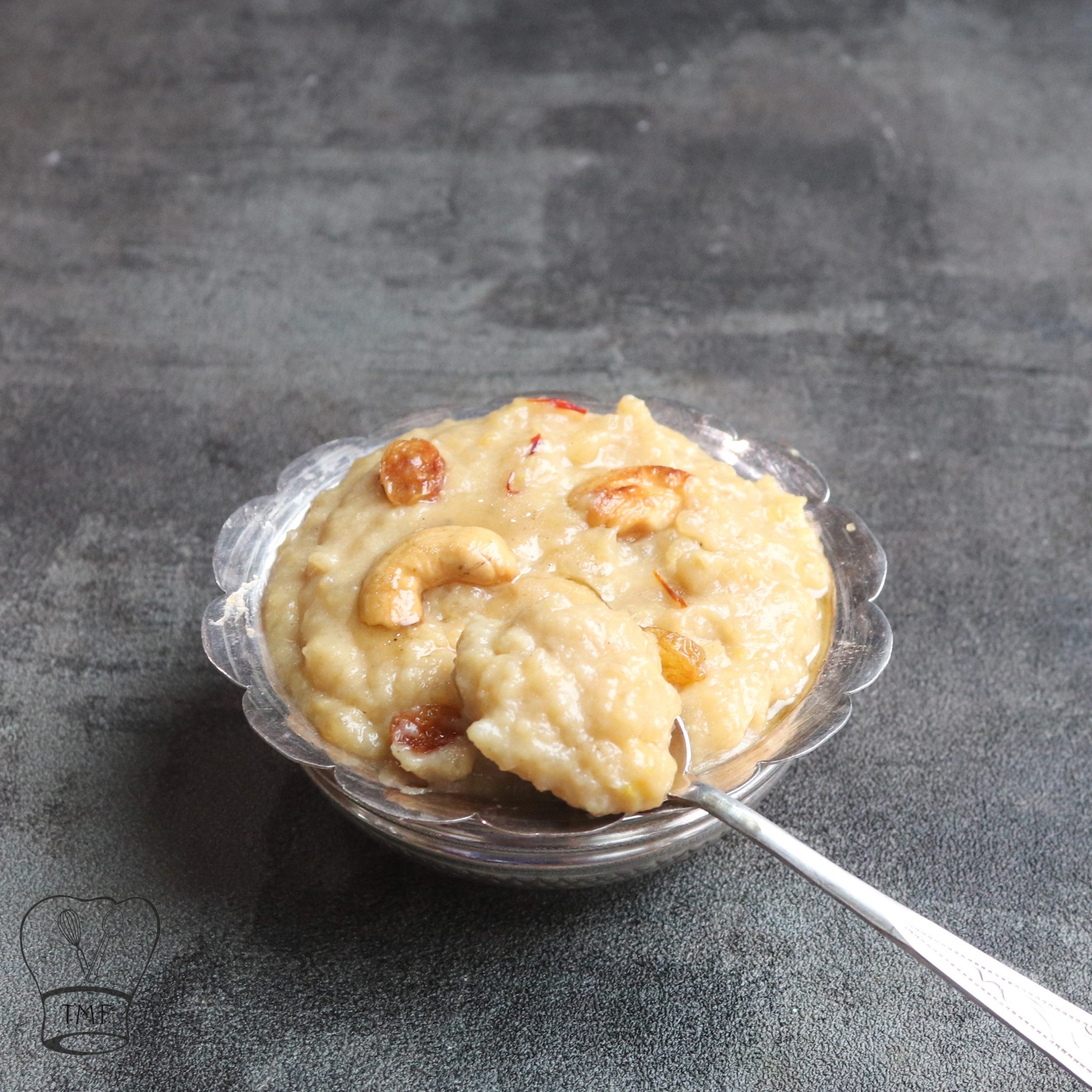
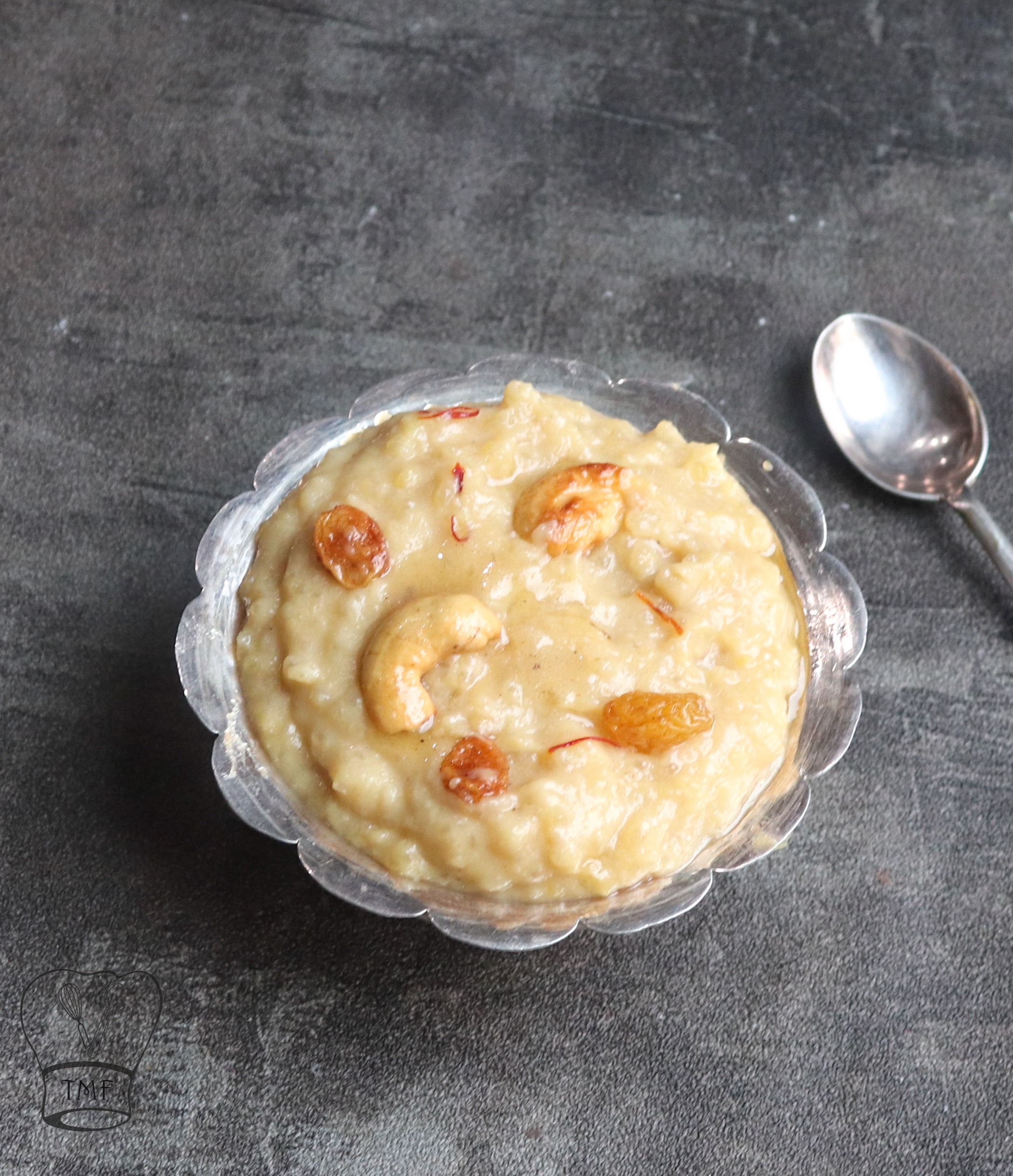
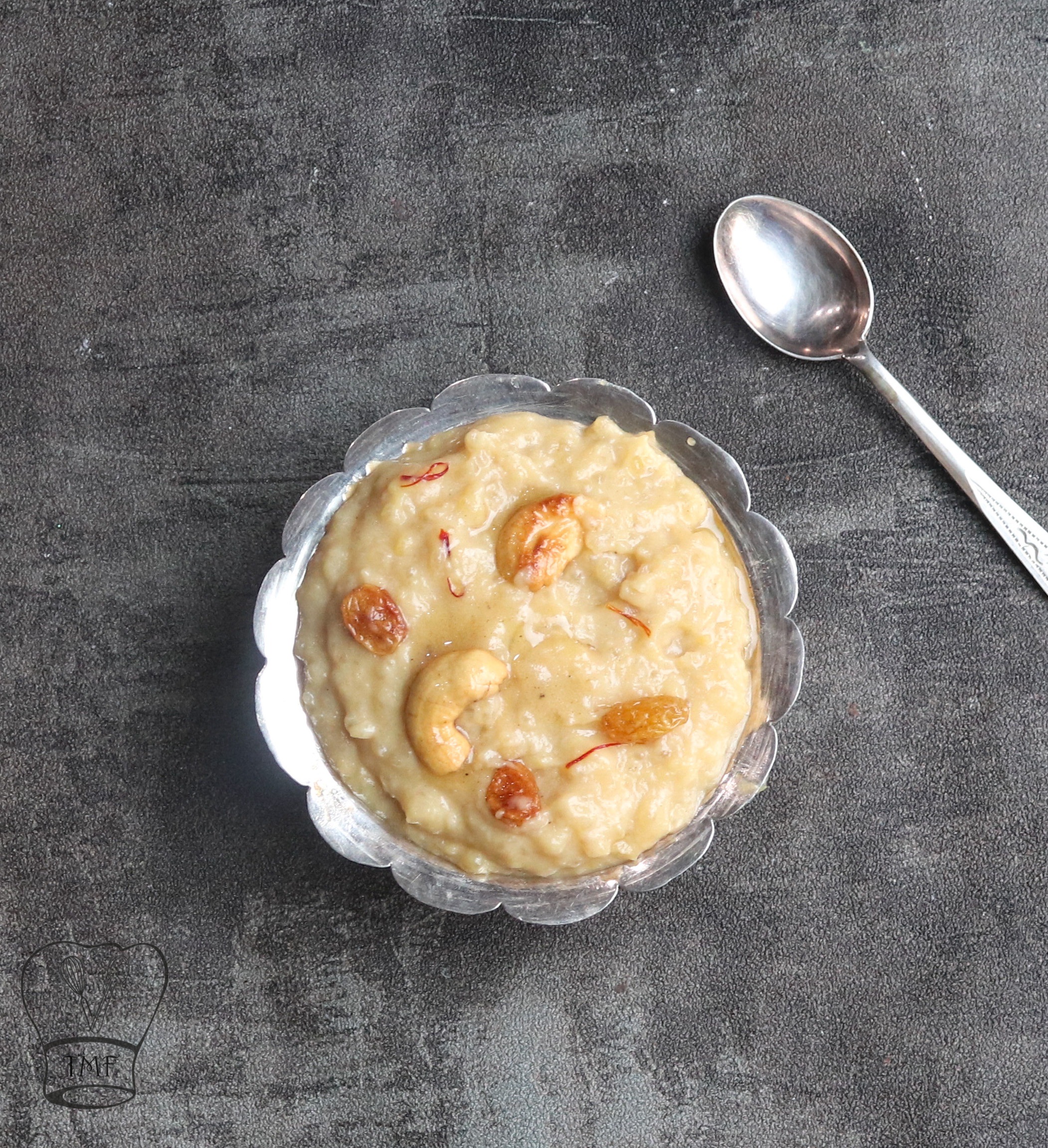
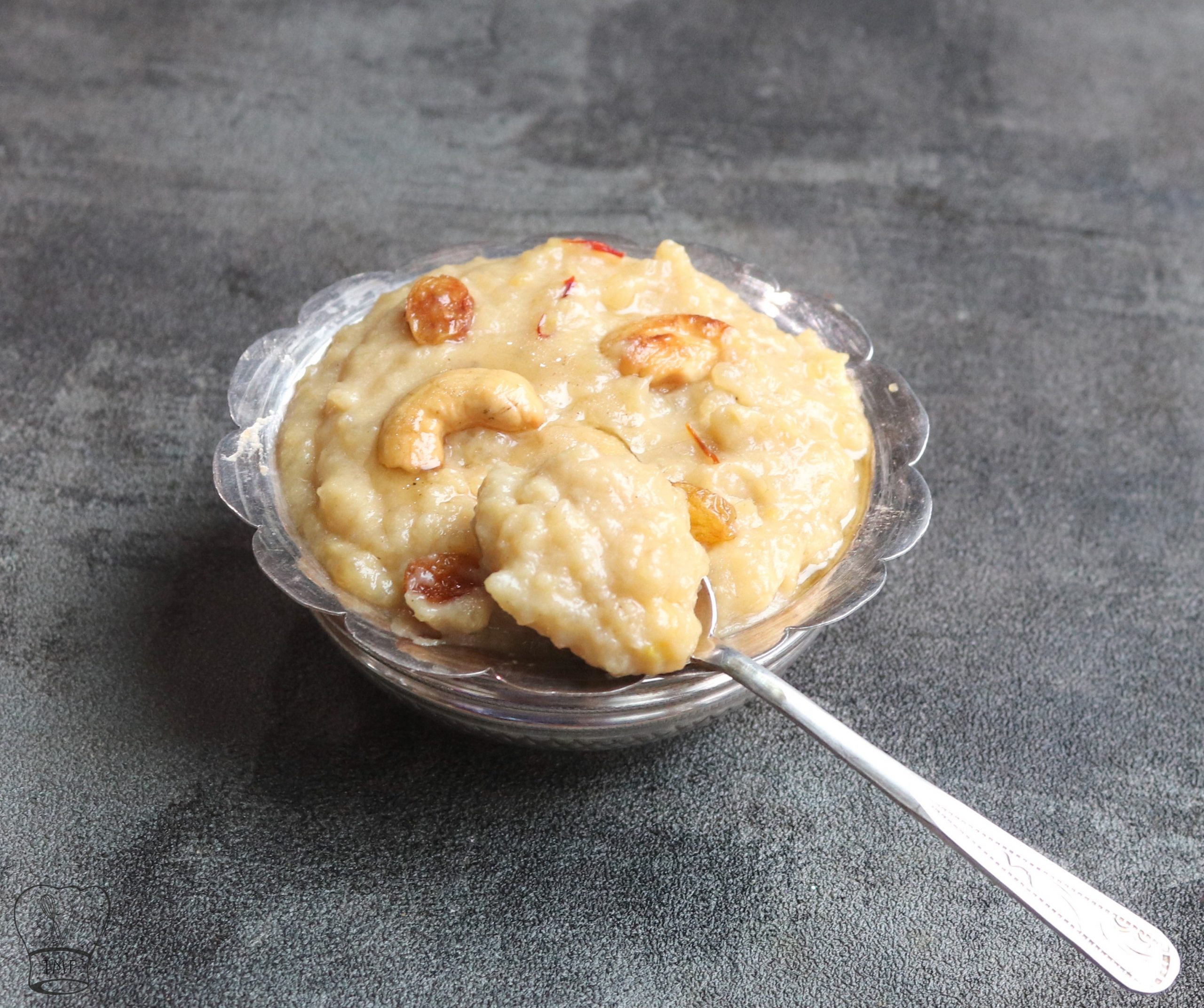

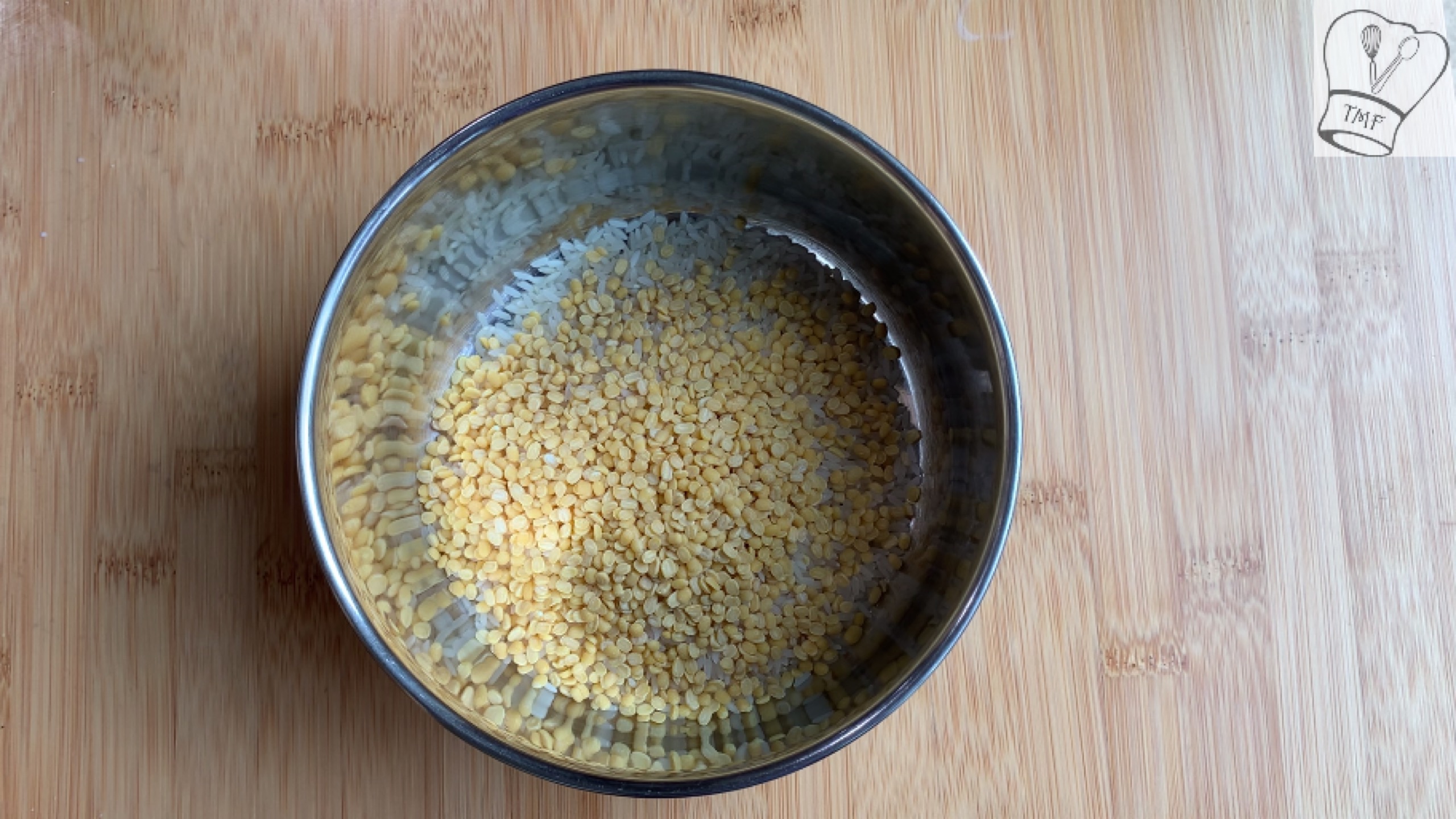
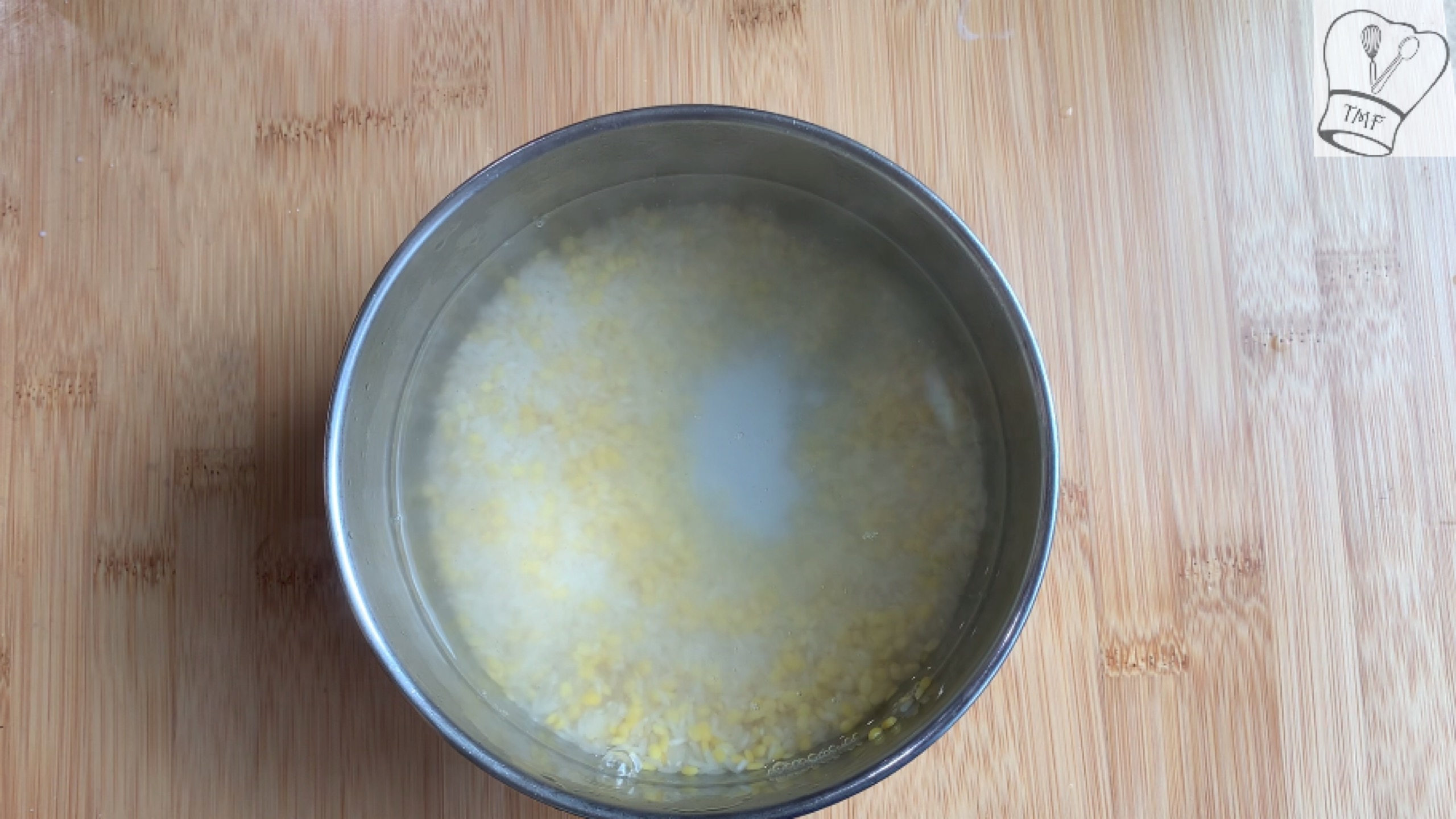
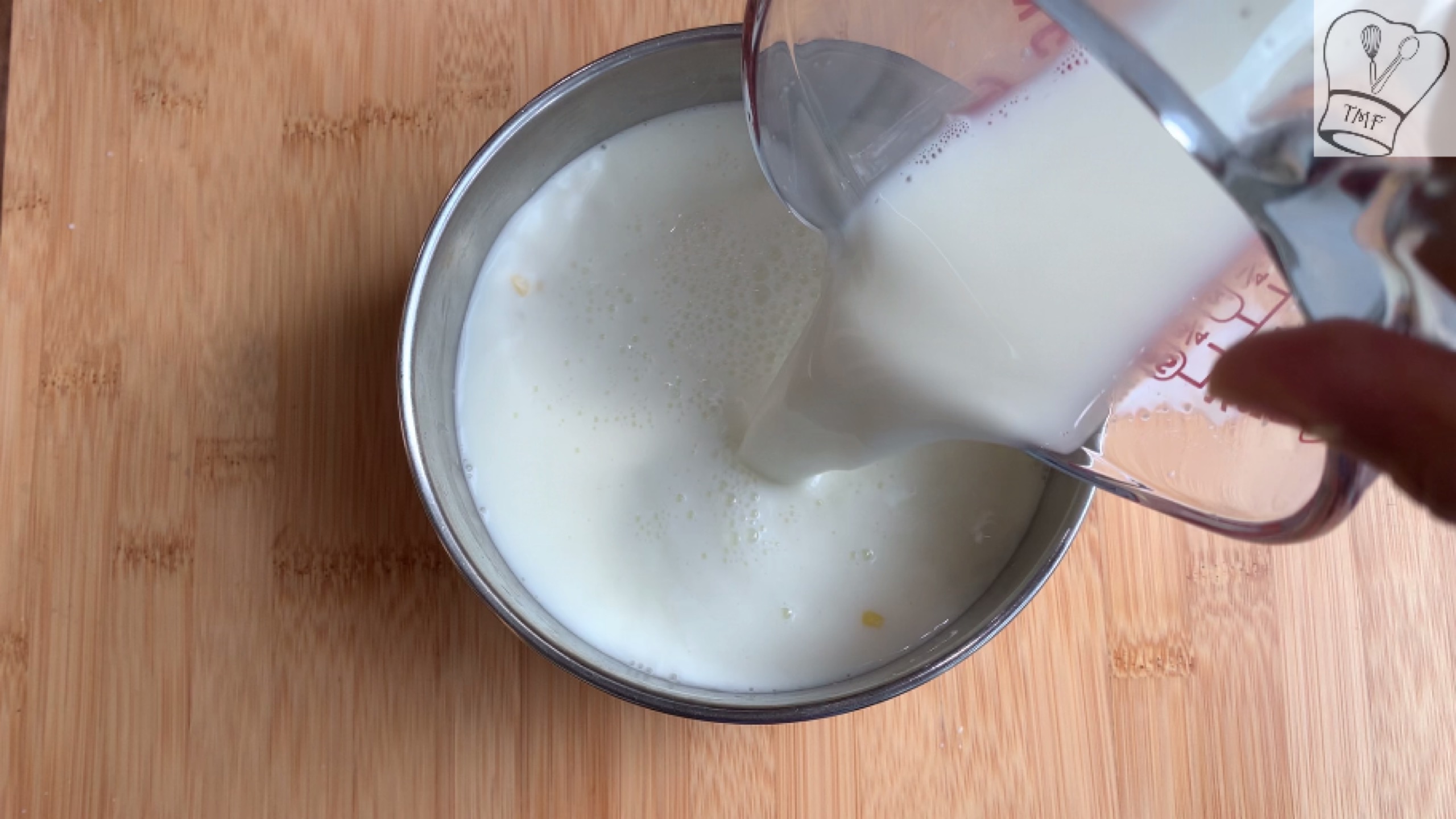


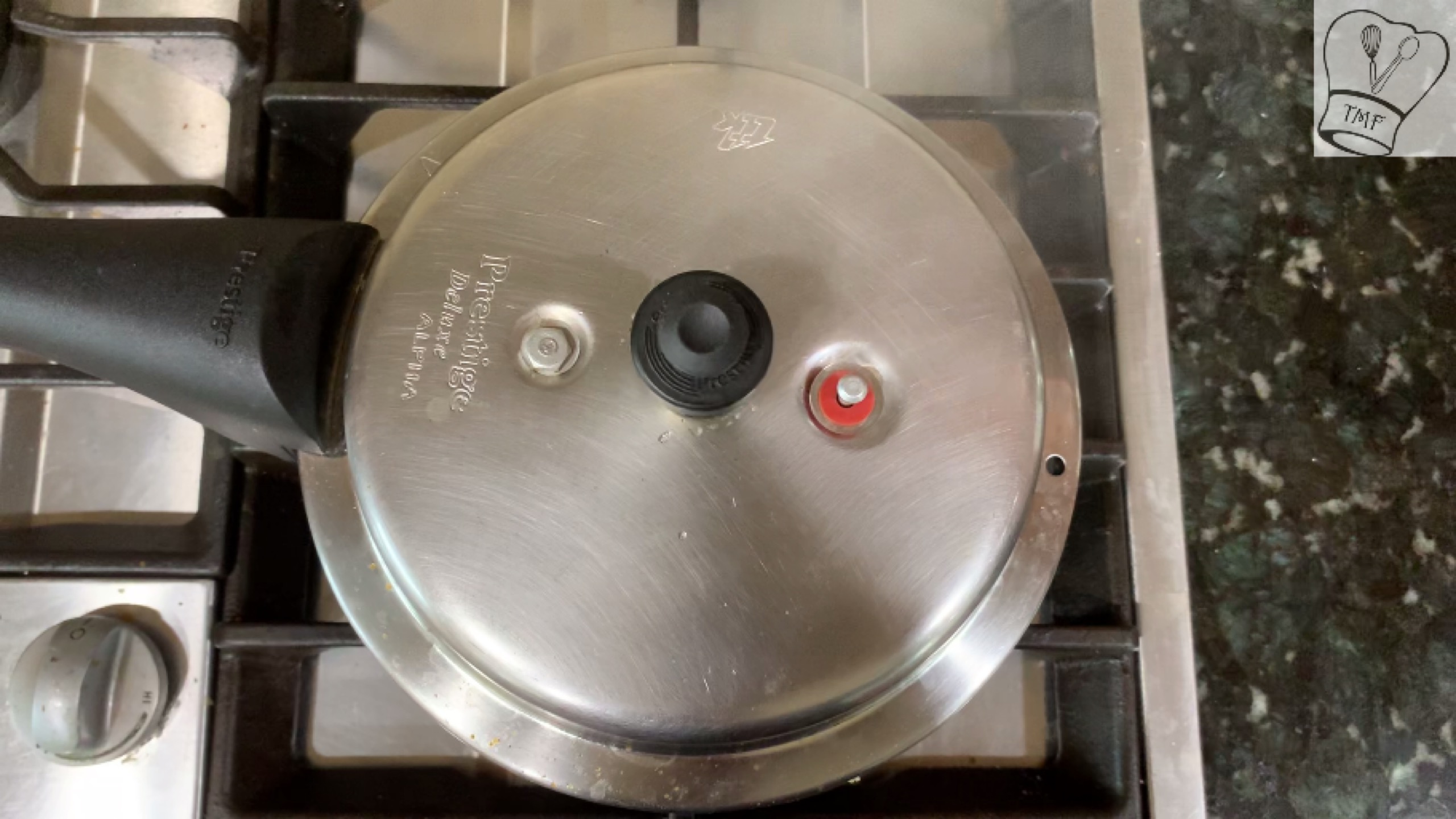
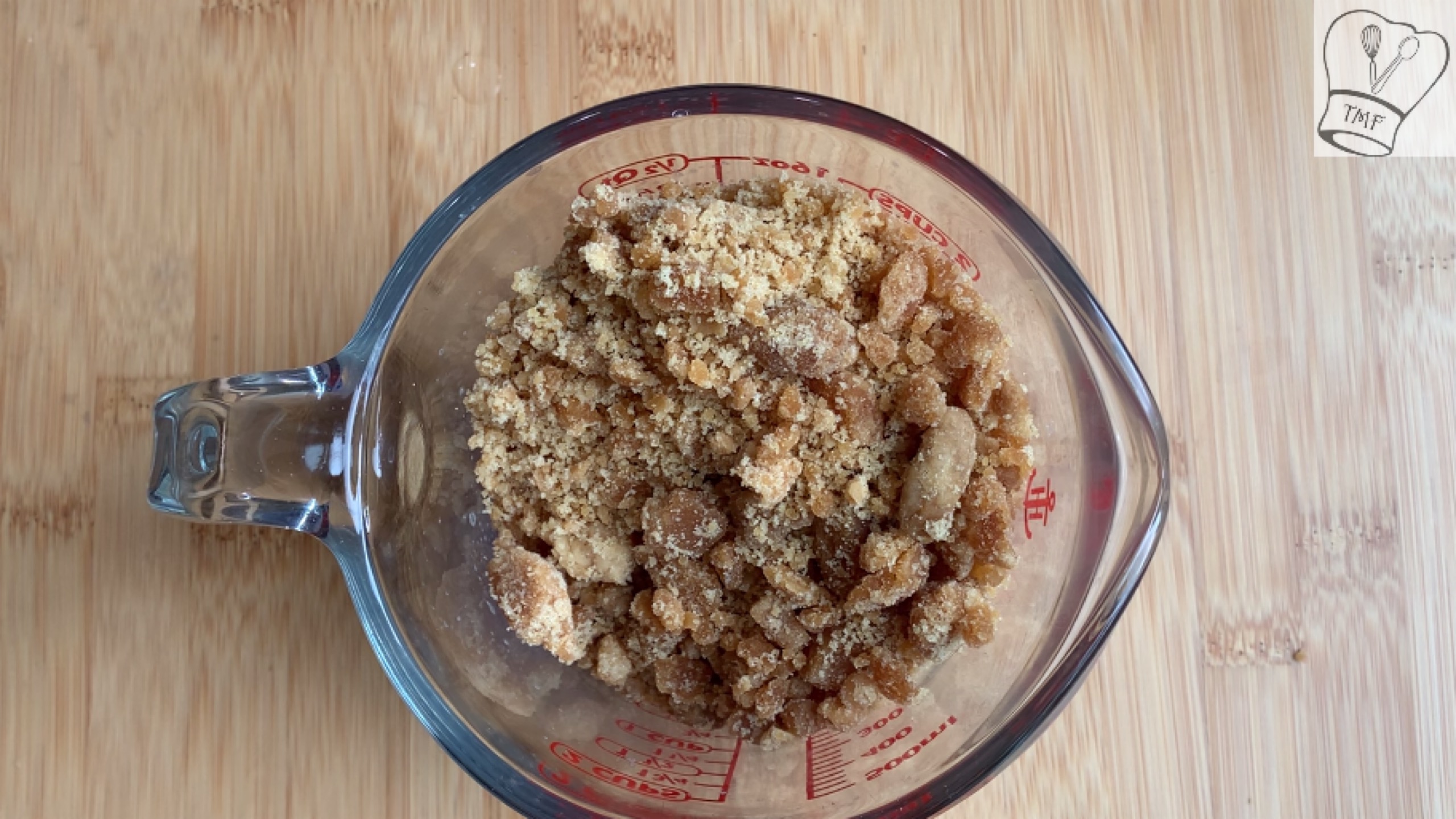
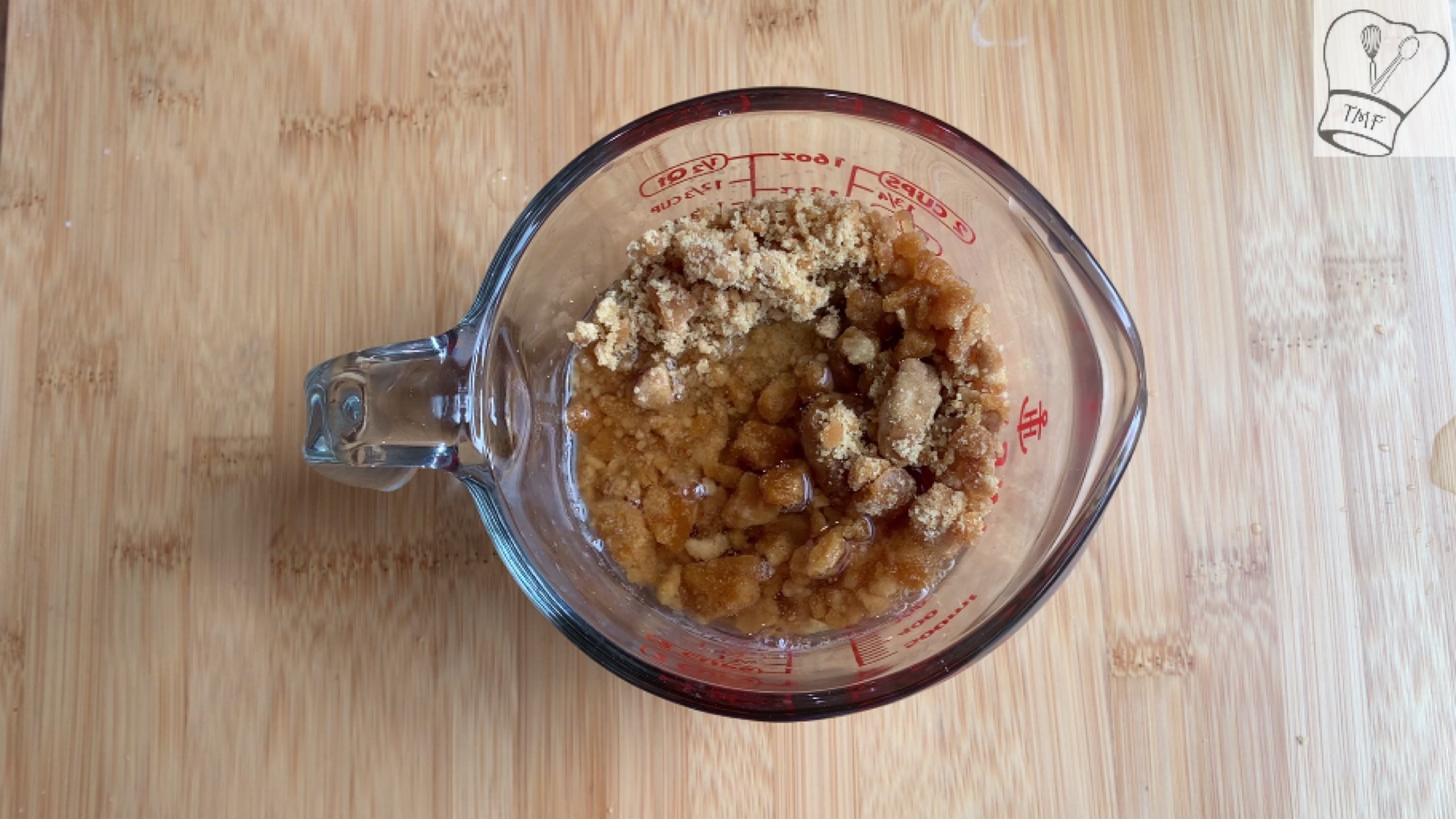
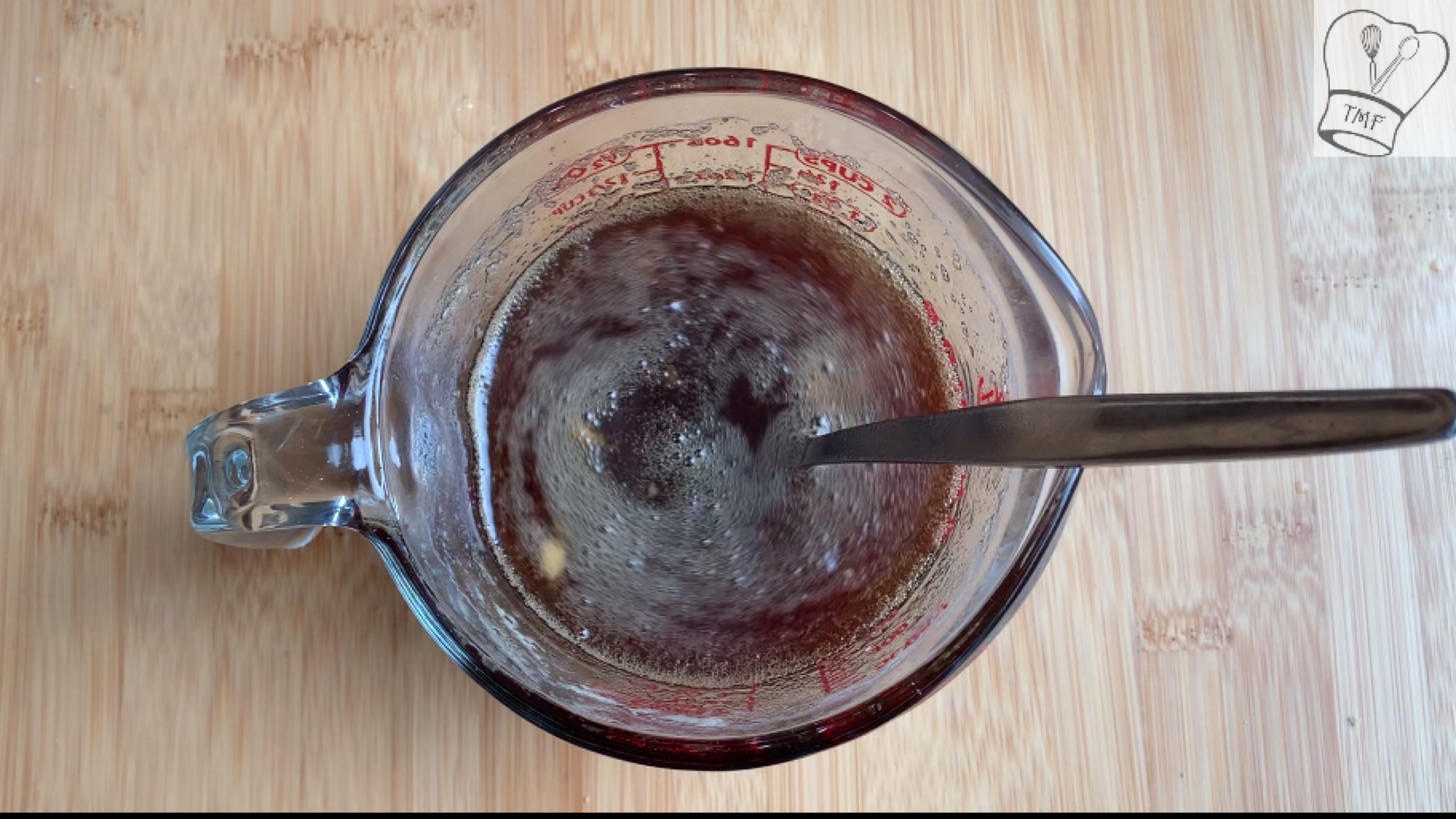


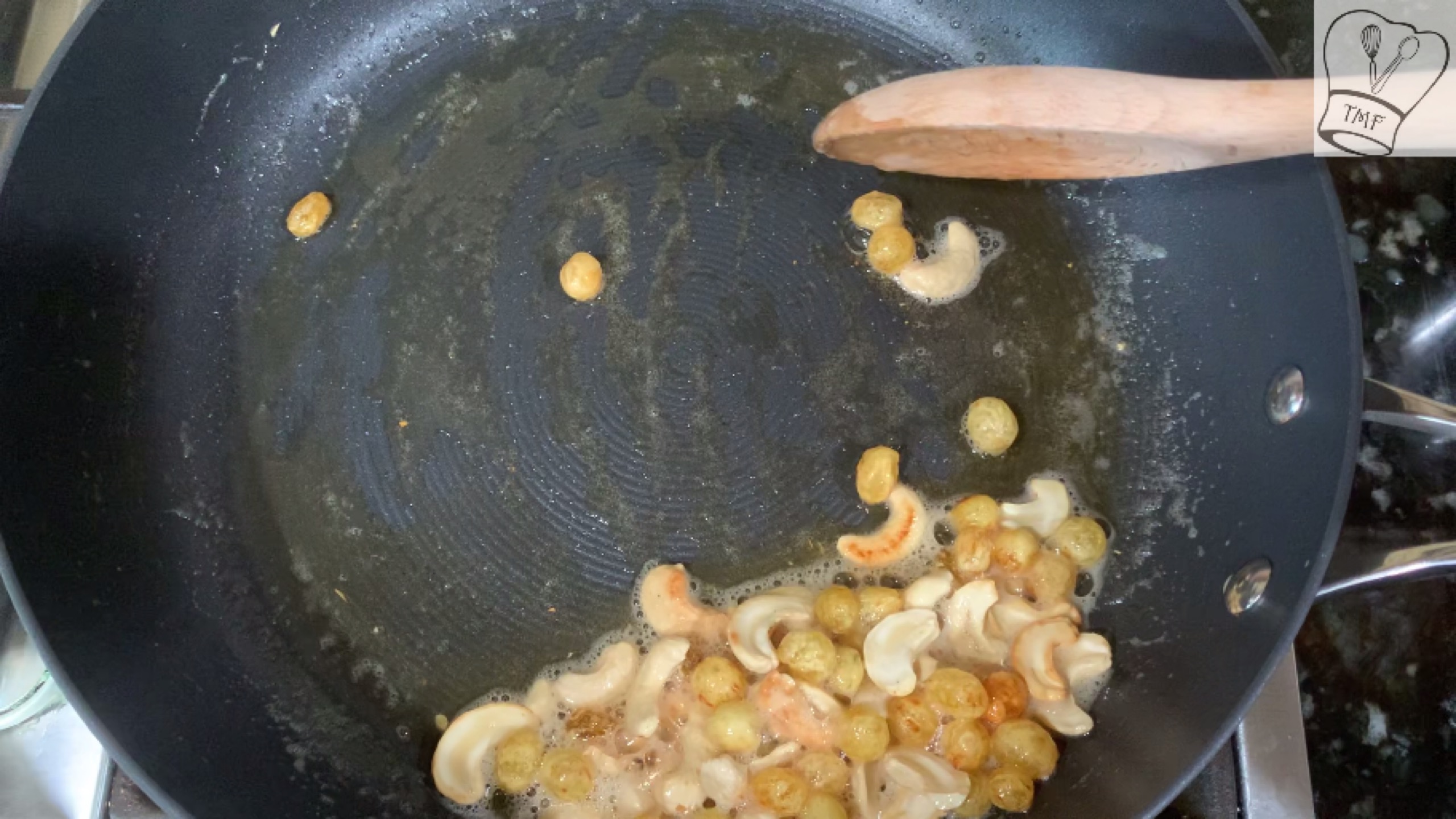
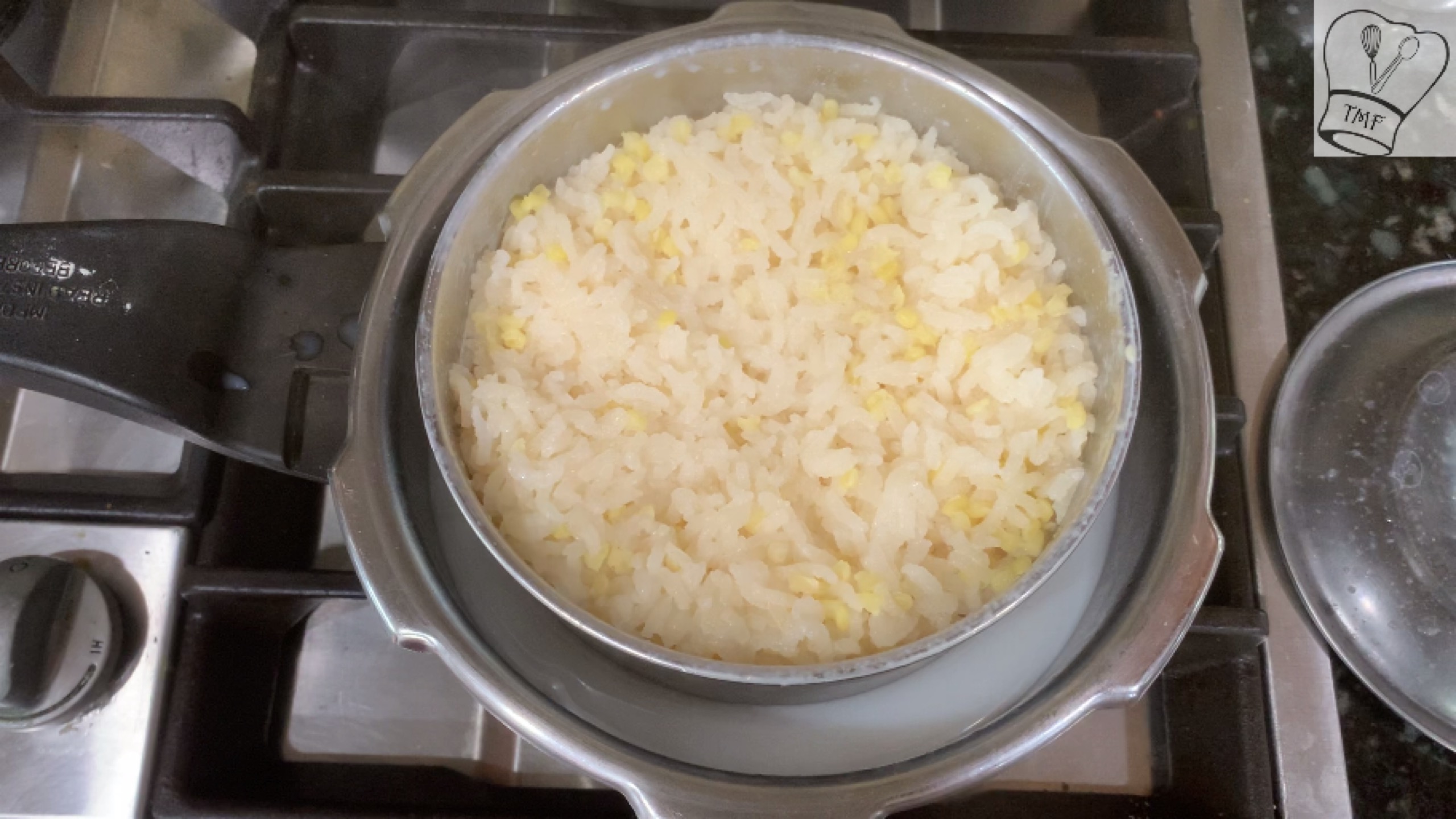
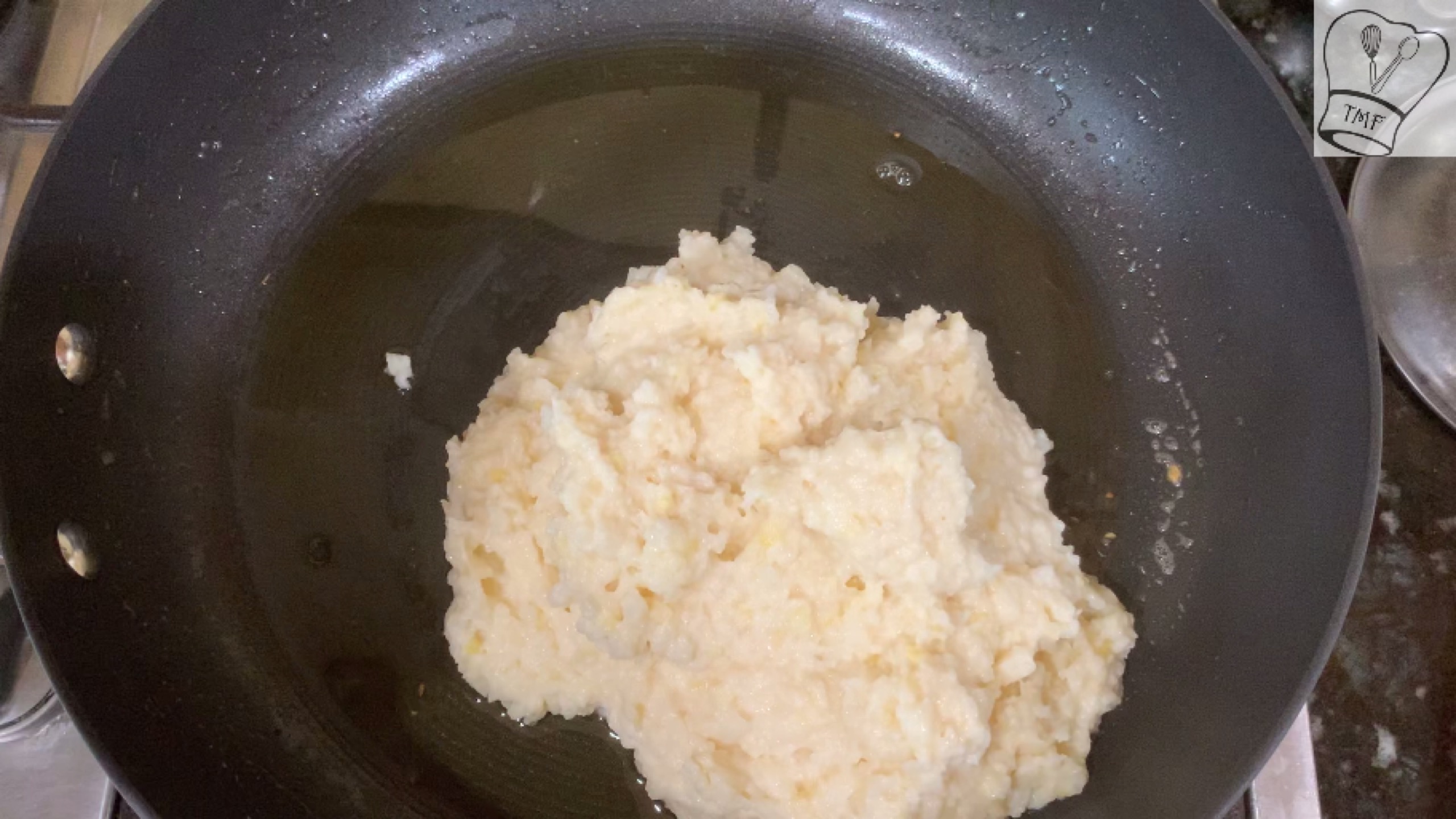
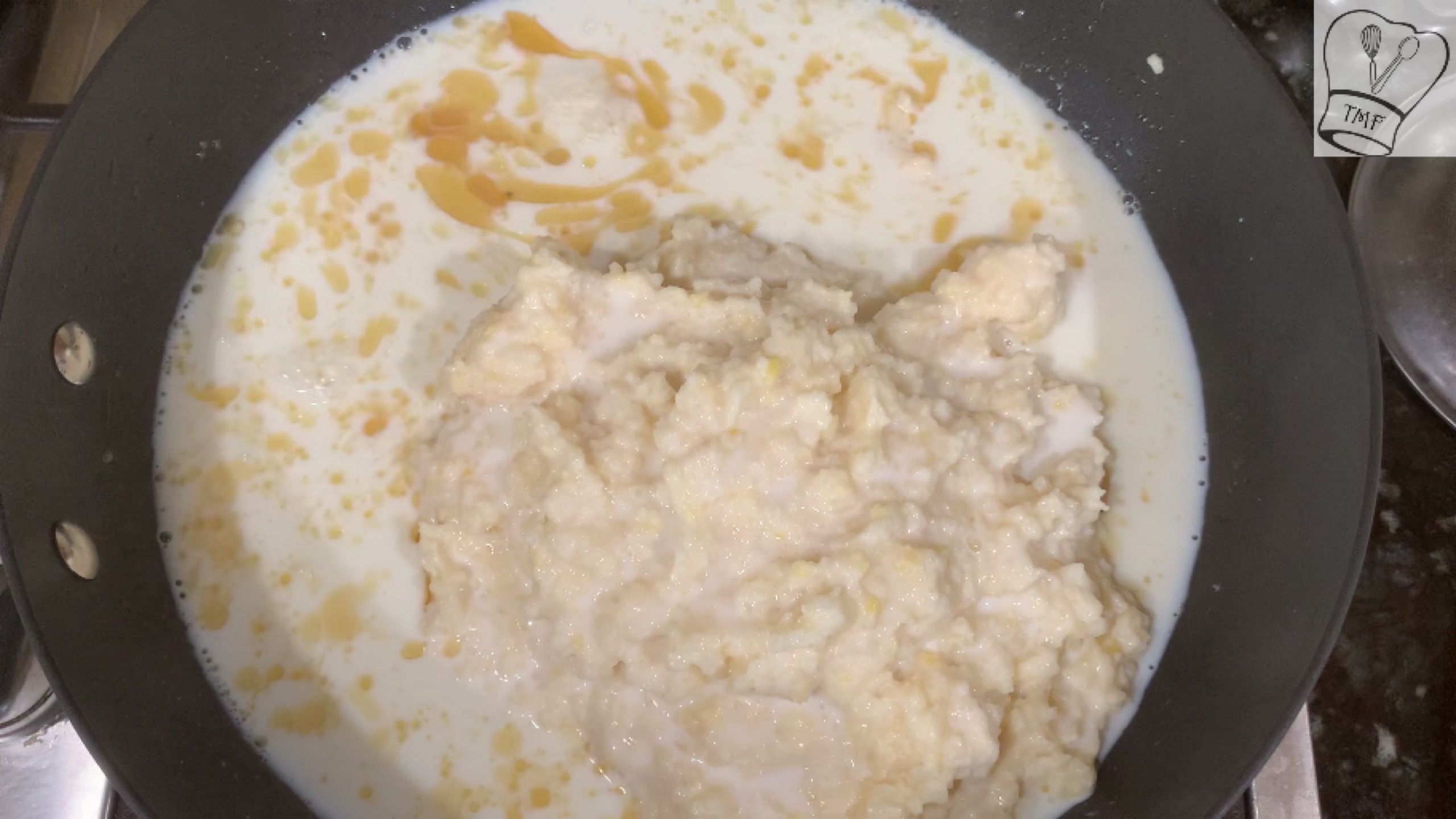
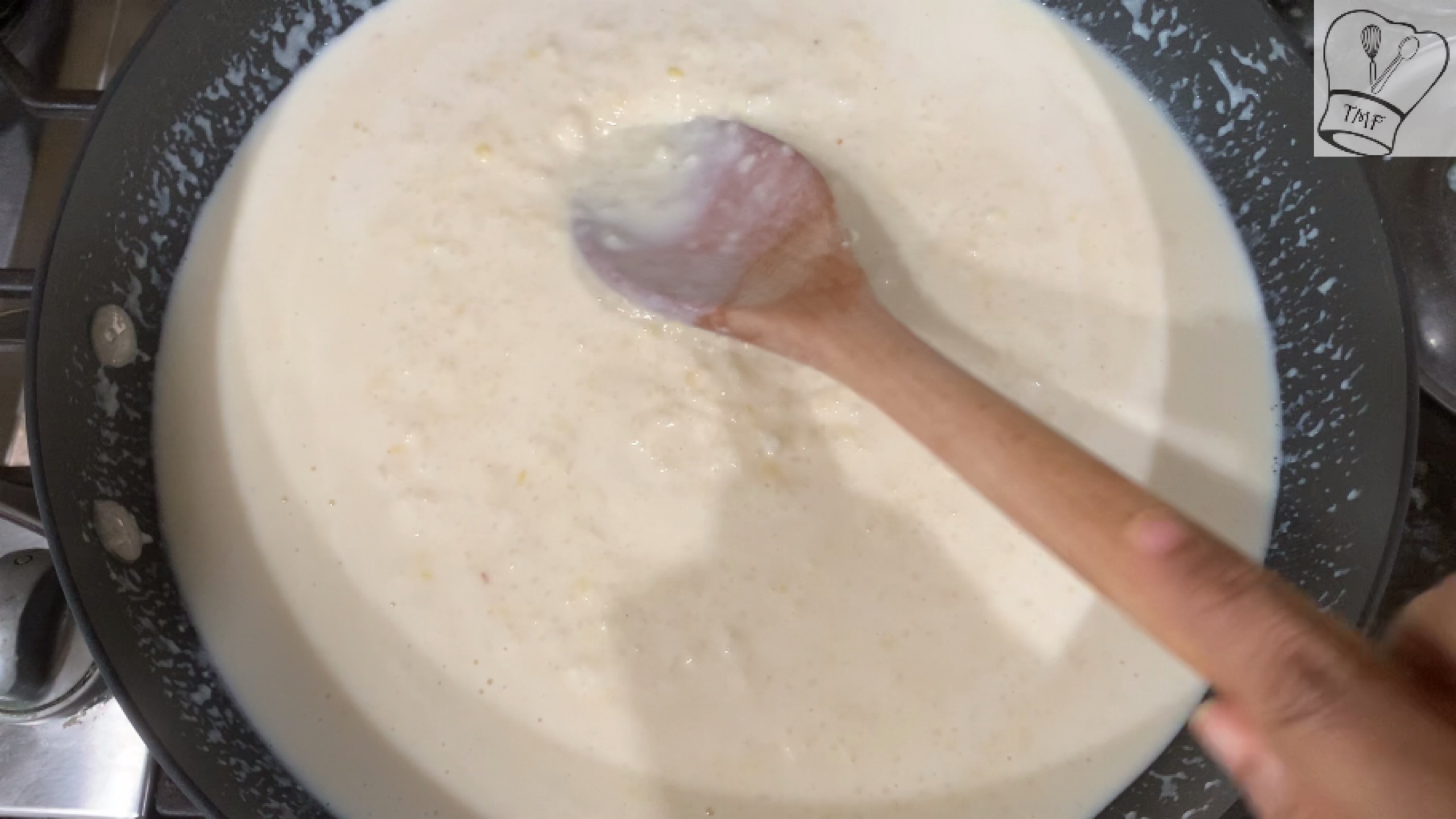


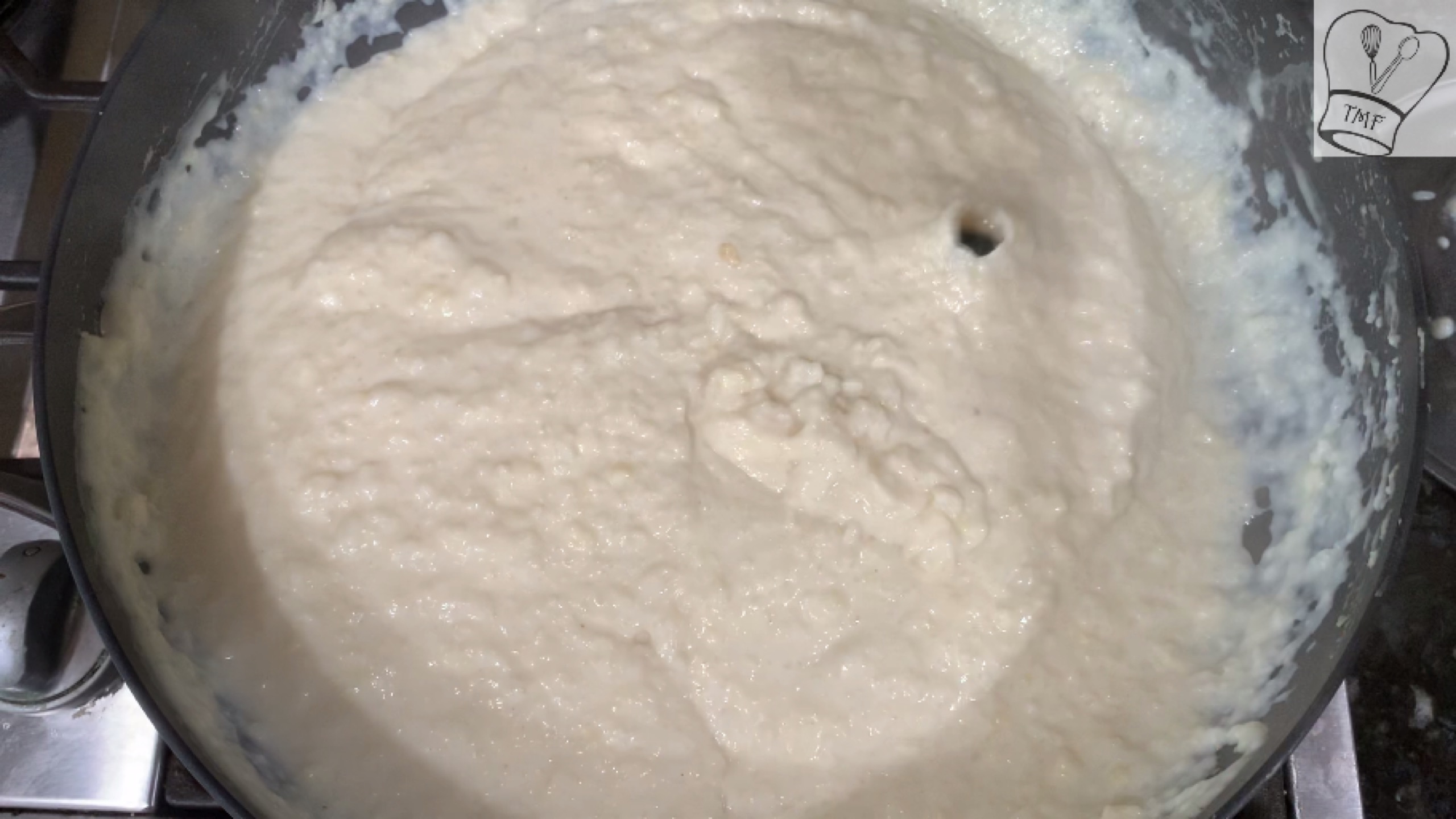
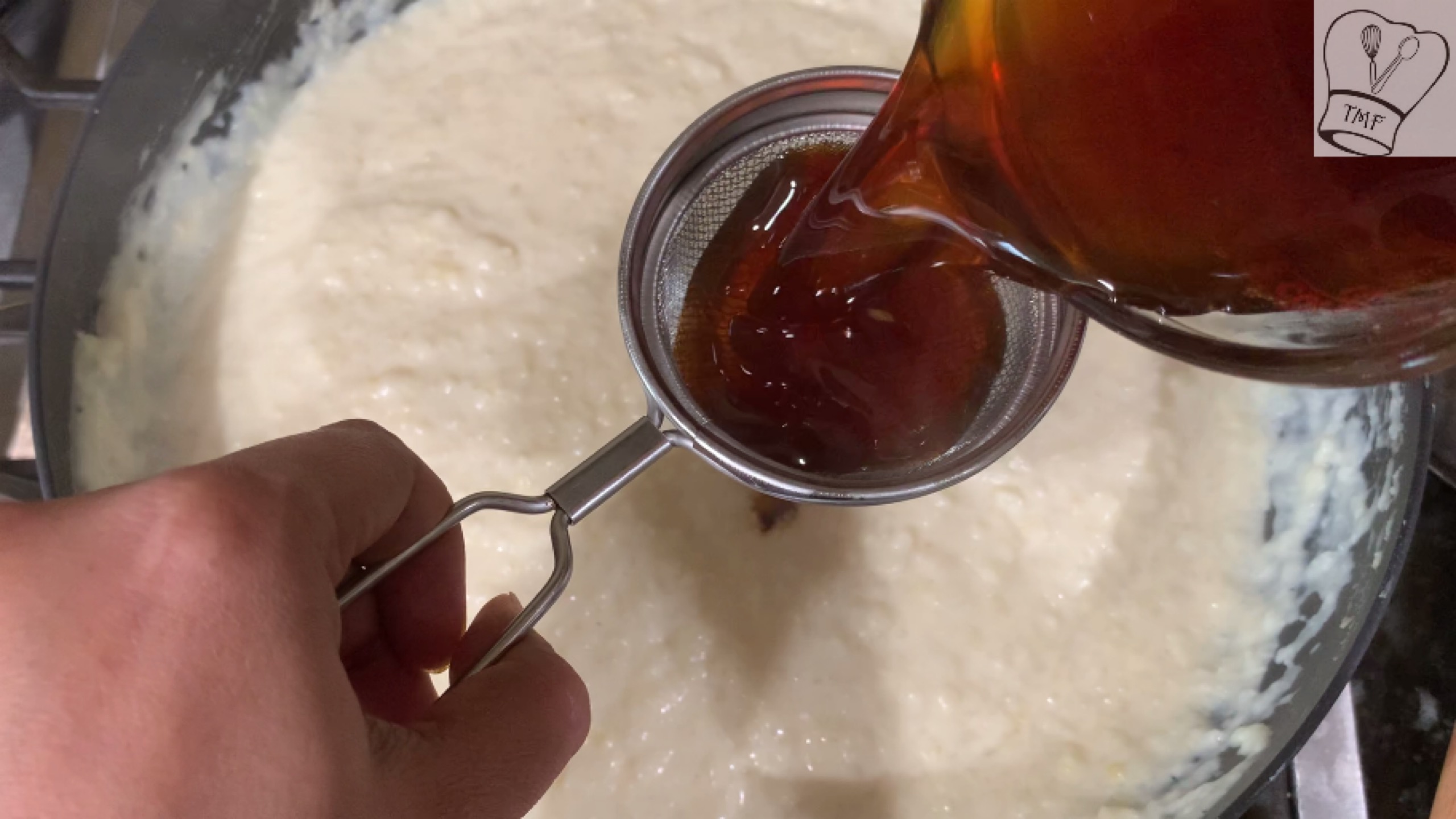

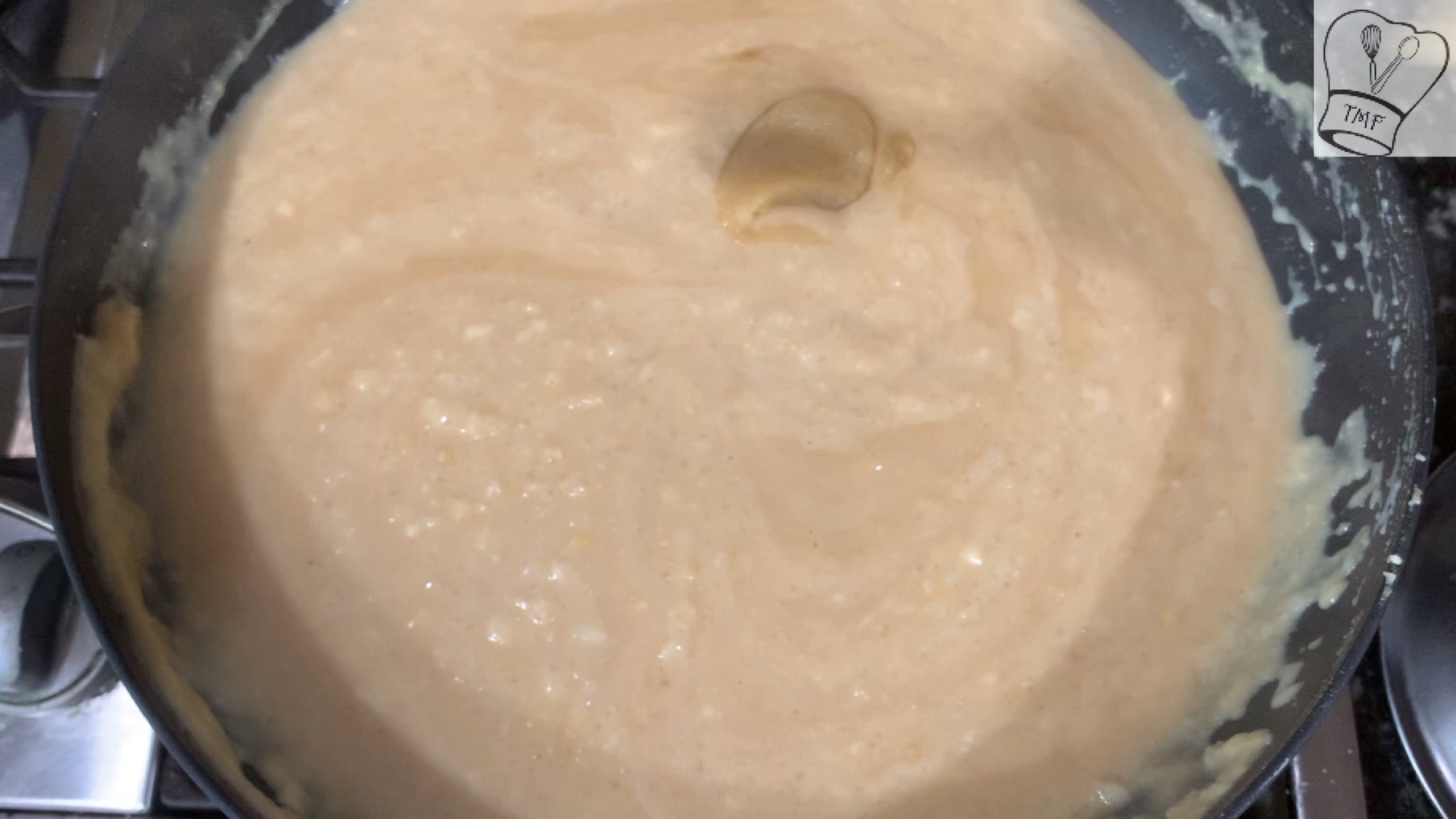
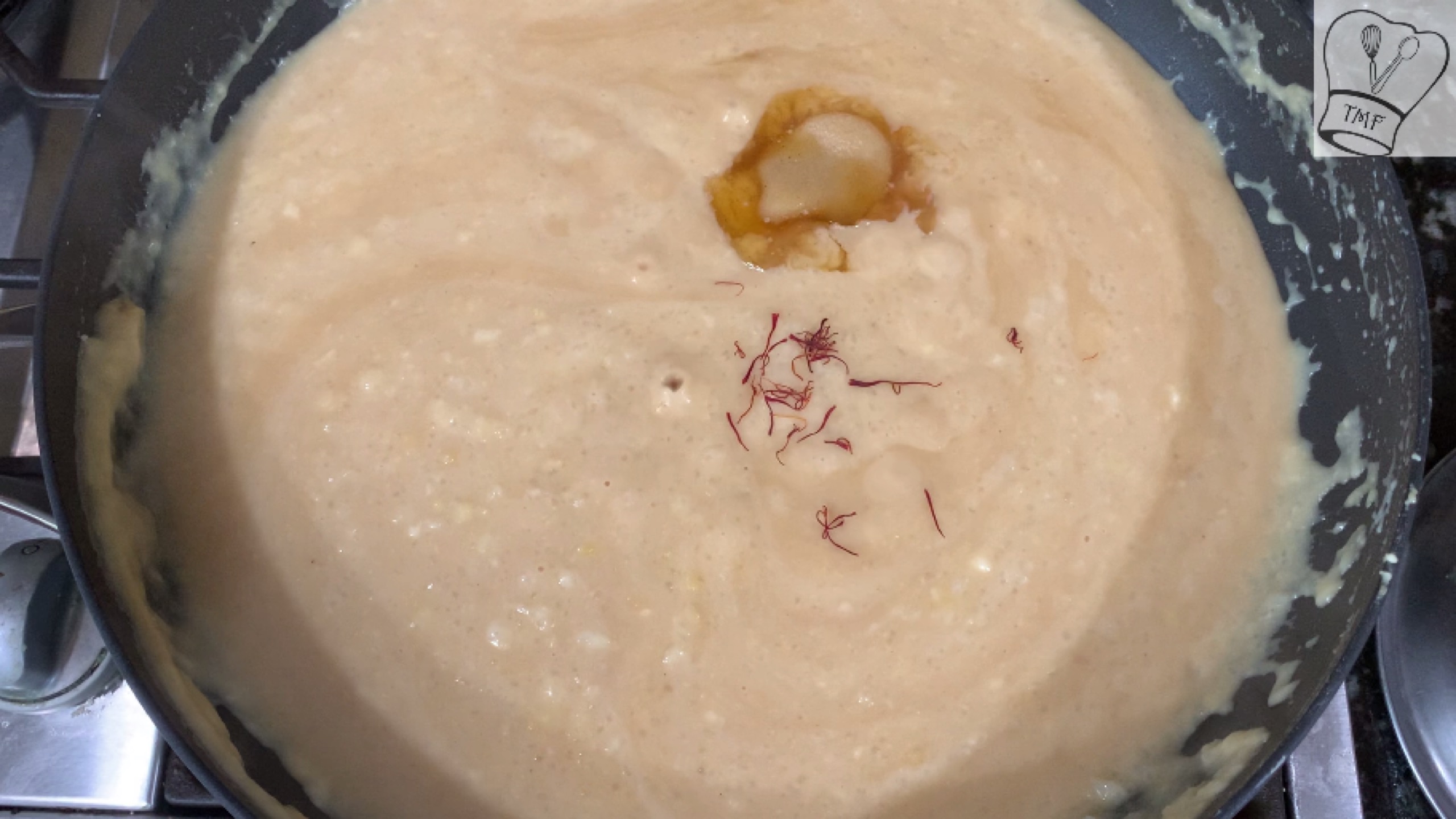

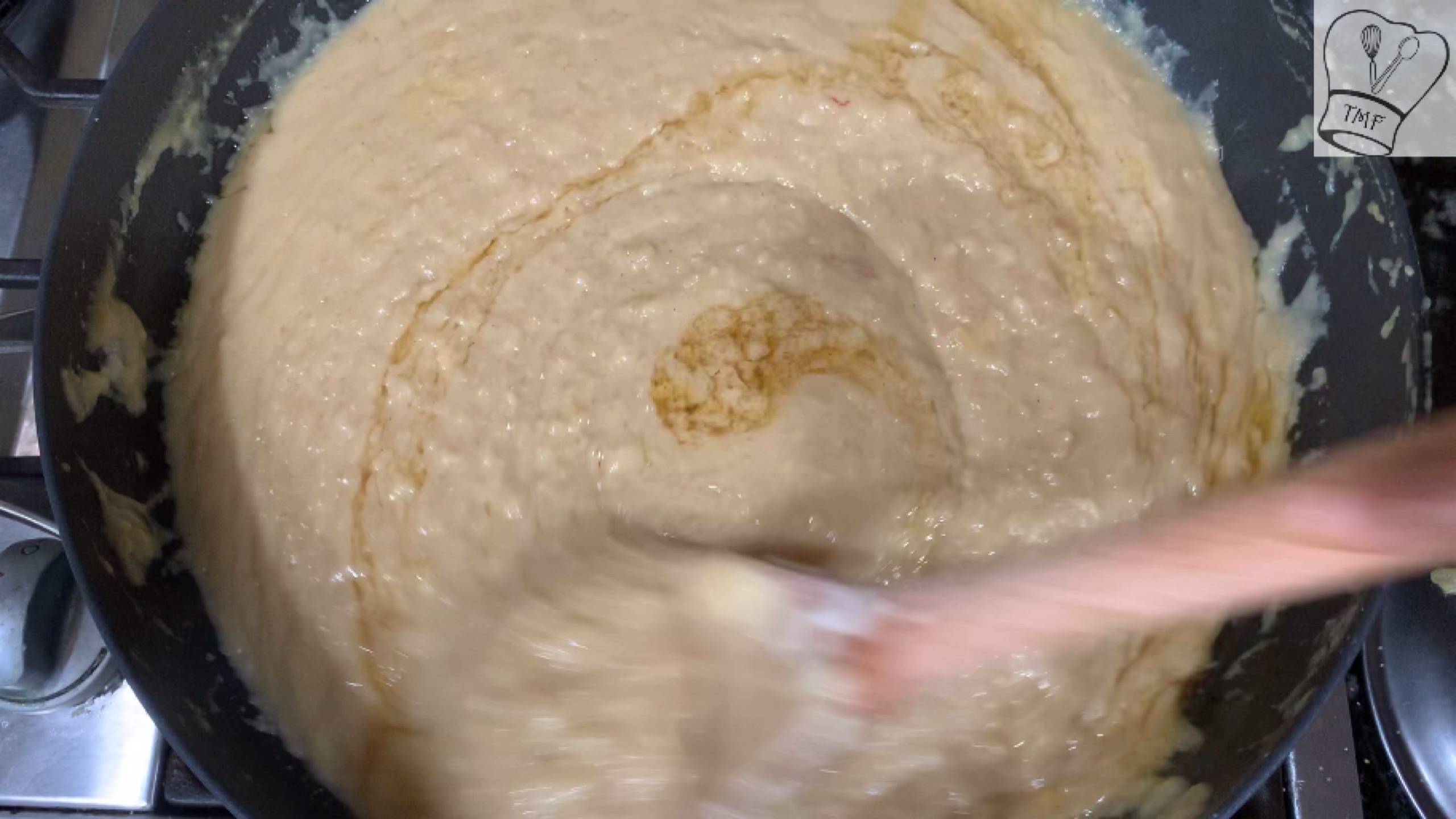
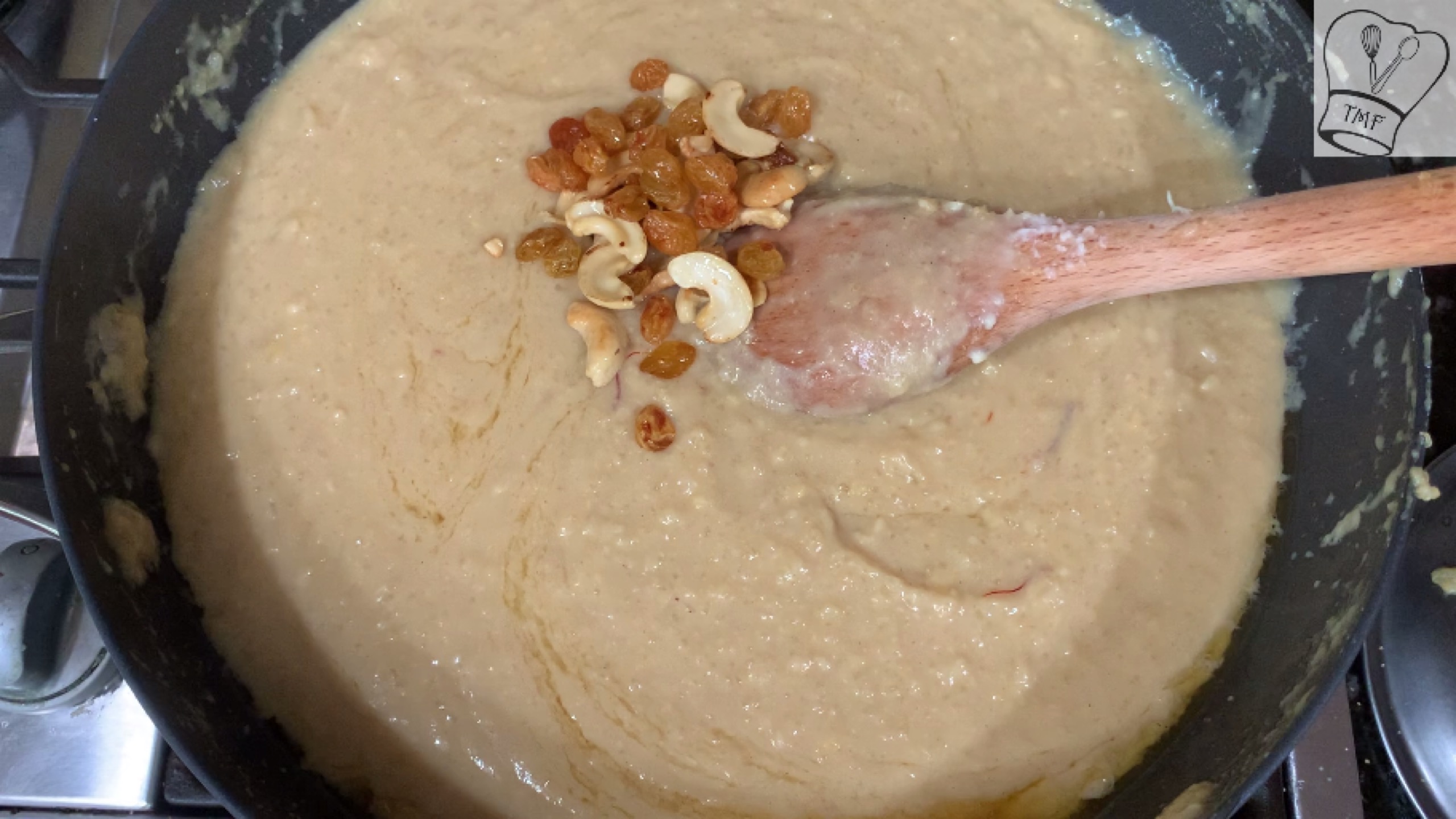
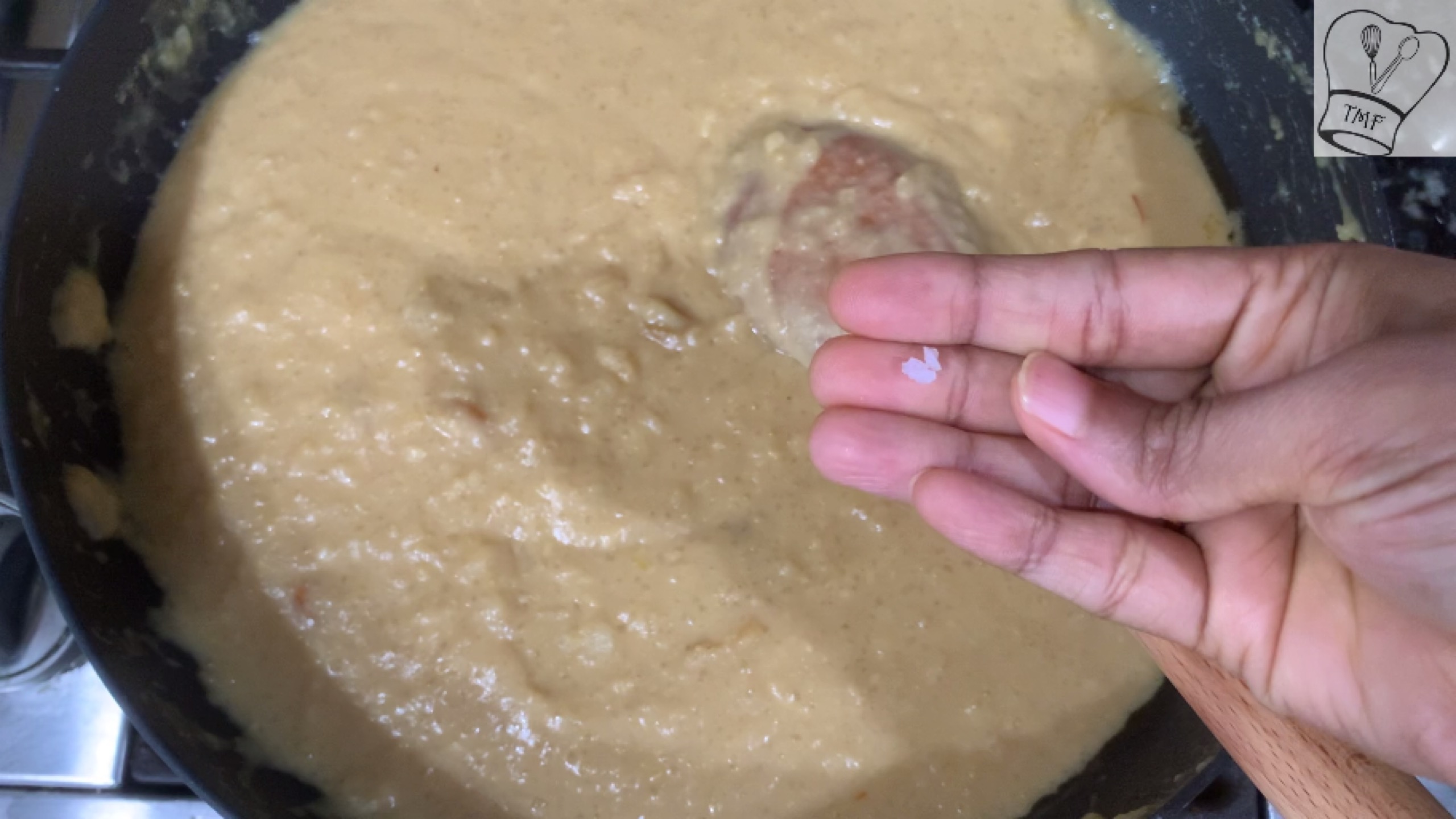
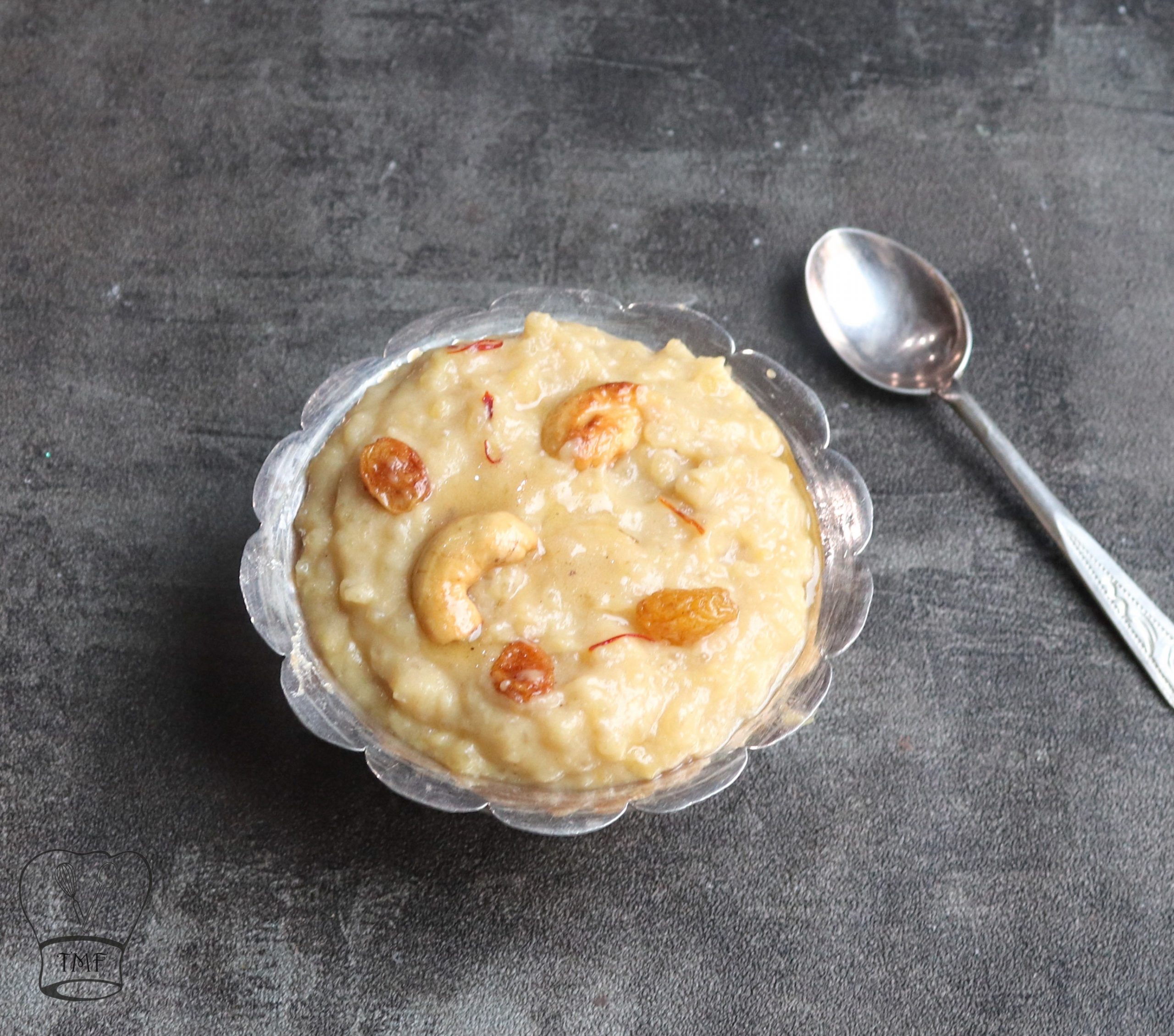
Comments
No Comments